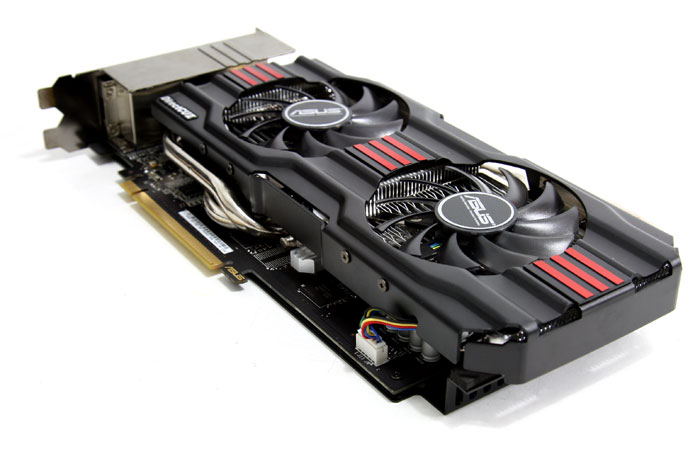Product Showcase
Product Showcase

Alright, above a deck of cards, we used the DirectCU II TOP cards where used in our GTX 670 SLI review as well. This however is the standalone review of the ASUS GeForce GTX 670 DirectCU II TOP model graphics card.
A nice dark looking card with red highlights. Let's look at the card from several different viewpoints. The GTX 670 card is quite good looking with the black colored monitor connectors and a DirectCU II cooler, thicker heatpipes are used on this model (8 mm). DirectCU boils down to the fact that the heatpipe are contact based, meaning they are in direct contact with the GPU, there is no base or block covering them.
The card is equipped with the GK104 GPU that harbors the new Kepler architecture we just spoke about. You get the basics like the graphics card, PEG converter cables, manual and a demo and driver CD, though bundles will vary with AIB/AIC partners.
ASUS clocks the card at a 1058 MHz baseclock, a 1137 MHz Boost clock -- the memory is running reference at 6008 MHz (lots of tweaking headroom left though). Combined this factory overclock pushes the card towards GeForce GTX 680 performance levels.

The ASUS GeForce GTX 670 will come with two GB of graphics memory, that's plenty if you are a hardcore gamer with a monitor resolution of 1920x1200. Here we can see that ASUS uses a custom design PCB as it definitely is a little longer then reference. Eye catching obviously is the two slot dual fan cooling combo. The design is terrific as it is by far the most silent GTX 670 card we tested to date while showing very decent cooling numbers in terms of temperature.

As stated the typical Boost Clock speed is 1137 MHz. The Boost Clock speed is based on the average GeForce GTX 670 card running a wide variety of games and applications. That Boost clock will vary from game-to-game depending on certain power conditions. The card is PCIe gen 3.0 compatible. Going from PCIe Gen 2 to Gen 3 doubles the bandwidth available to the add-on cards installed, from 500 MB/s per lane to 1 GB/s per lane.
